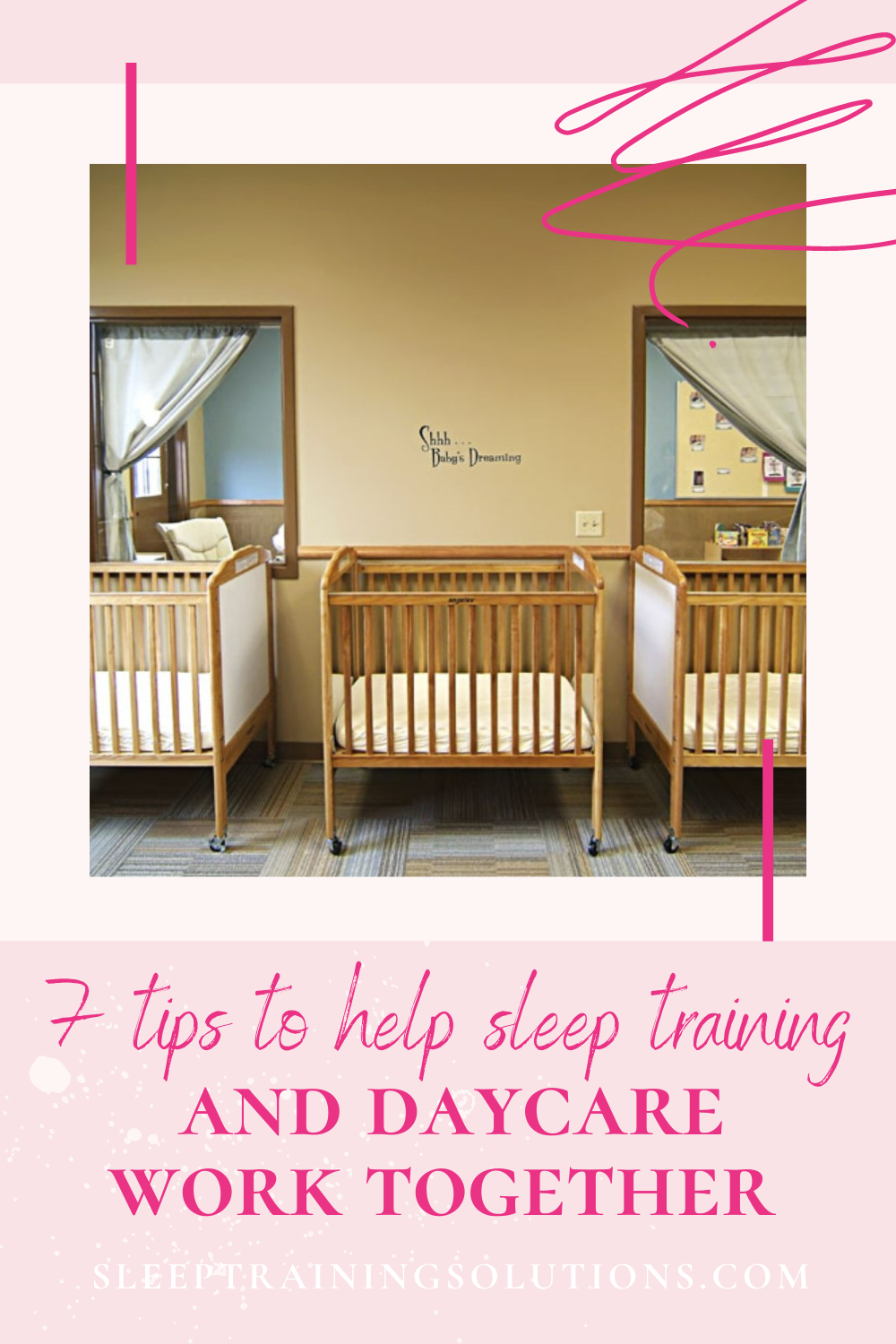7 tips to help sleep training and daycare work together
Sleep training a baby is hard. It’s a process that takes time, patience and encouragement from your support system!
And that’s just when you’re sleep training in one environment – home.
When you add daycare to the mix, all sorts of variables come into play, many of which are not really in your control.
My first piece of advice is to interview daycare providers before you commit one. Make sure they’re willing to work with you and your child during the sleep training process for those few weeks it’ll likely take to get your child on a better schedule.
If they say they really have to adhere to their set nap schedules and your child needs to adapt to their schedule, ask if they can be flexible just for this short time and then you’ll be happy to have her on their schedule when she’s ready.
This is a conversation that’s best to have with the director of the facility in addition to one of the staff regularly in the room with your child.
Do point out that if they partner with you on this, your child will be easier to put down for naps while in their care and have a happier disposition getting the sleep she needs during the day – you’re trying to make their job easier!
If they say it’s really impossible to make any exceptions, then you might consider looking at alternatives.
Assuming they are happy to work together with you on this, here are seven tips to help make progress quickly:
Try to start over a long weekend when you can take a couple days off of work – at least 4 days is ideal – so you can get the hardest part of sleep training done before she heads back to daycare.
When she goes back after your long weekend, print out a log sheet (if your daycare doesn’t provide one) and write down when you’d like them to put her down for her first nap and how long she should be awake in between naps or what the nap schedule should look like. Ask them to keep the log during the day so you know what sleep she’ll need when she leaves daycare each day.
It’s also important to emphasize what things you’re trying NOT to do anymore – no rocking, falling asleep in the swing, etc. – and ask them not to use old sleep props.
Ask that they only put your baby in the crib for naps, not for any playtime. If there’s a mobile on the crib or any other crib toys, ask that they be removed.
If the babies have designated cribs, see if you can get one in a back corner where it’s going to be dark and quiet (or as dark and quiet as can be expected in that environment!)
Consider getting duplicates of those things you’re using at home – white noise machine, lovey, sleep sack, favorite bedtime book, etc. – so there’s more consistency across all sleeping situations. Ask if they can spend just a few minutes using these as you do at home in a mini naptime routine.
For those first few weeks, go straight home after daycare so you can spend some quality time together and get her to bed on time!
In the beginning, she may be overtired at daycare, but you can help do a reset each night until her schedule evens out.
Sleep training in one environment can take up to two weeks, but babies that go to daycare can take a bit longer. As long as everyone’s on the same page and working for the same goal, be patient. It will work and soon your child will be taking better naps at daycare which will help with better night time sleep too!
Photo Credit: www.annasbananas.com
Related Posts:
This post is for informational purposes only and may not be the best fit for you, your child and/or your personal situation. It shall not be construed as medical advice. The information and education provided here is not intended or implied to supplement or replace professional medical treatment, advice, and/or diagnosis. Always check with your child’s physician or medical professional before trying or implementing any information read here.





